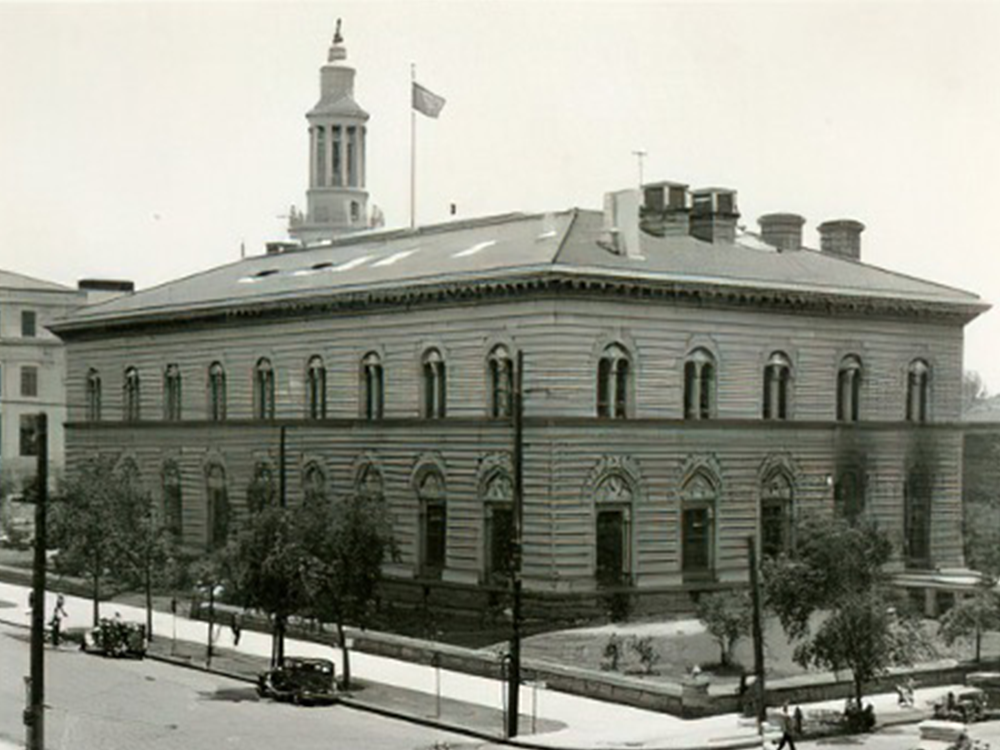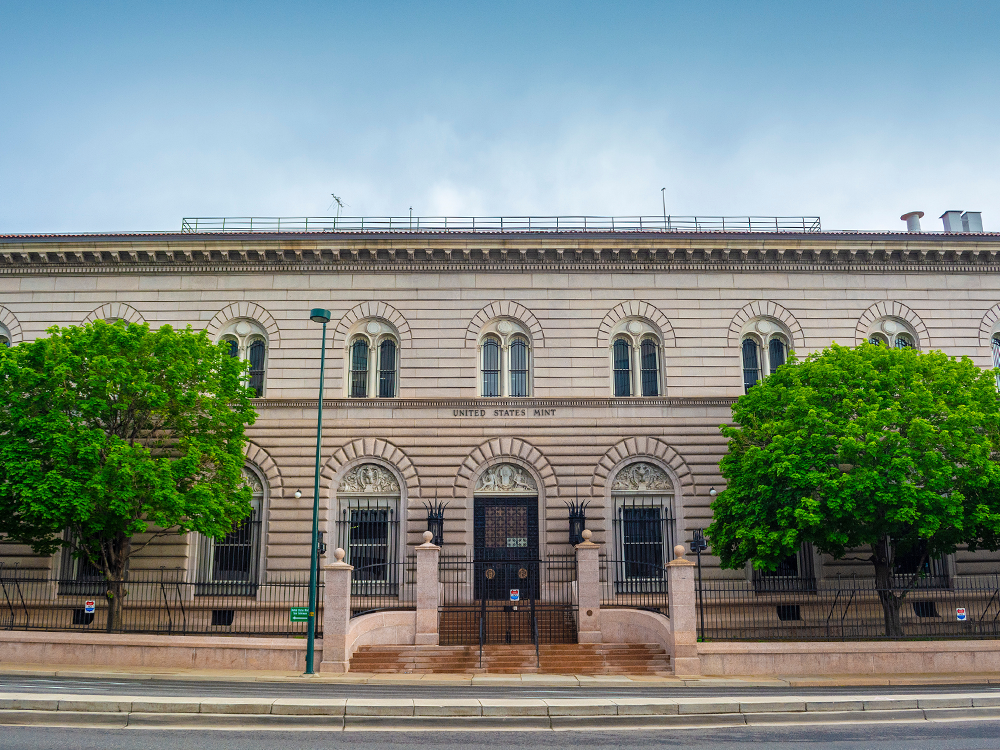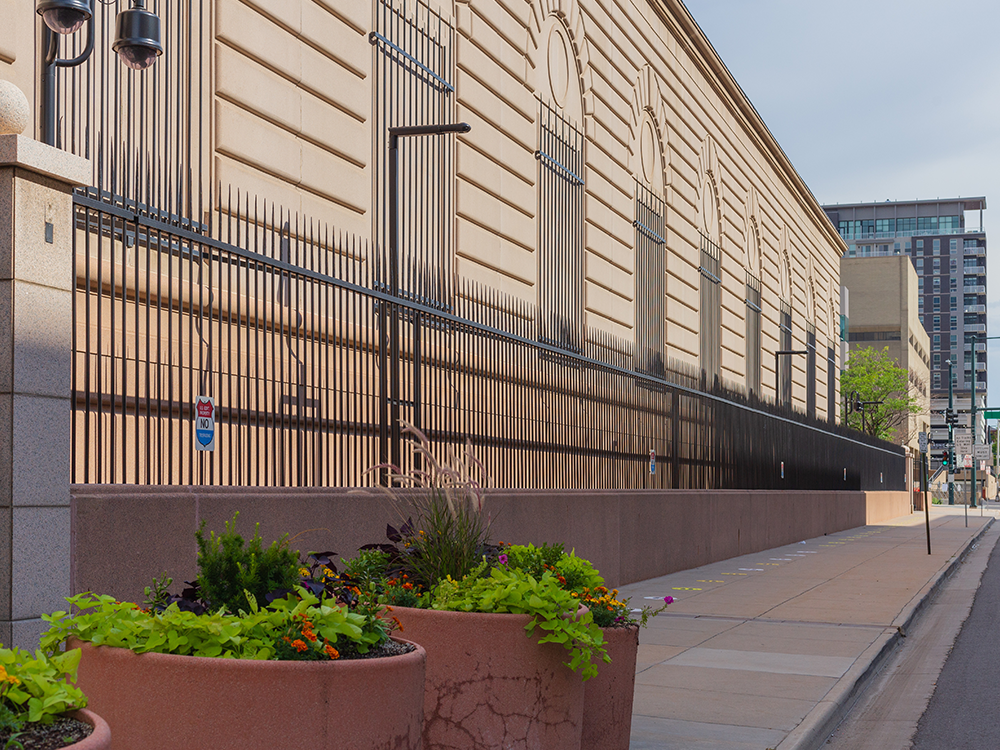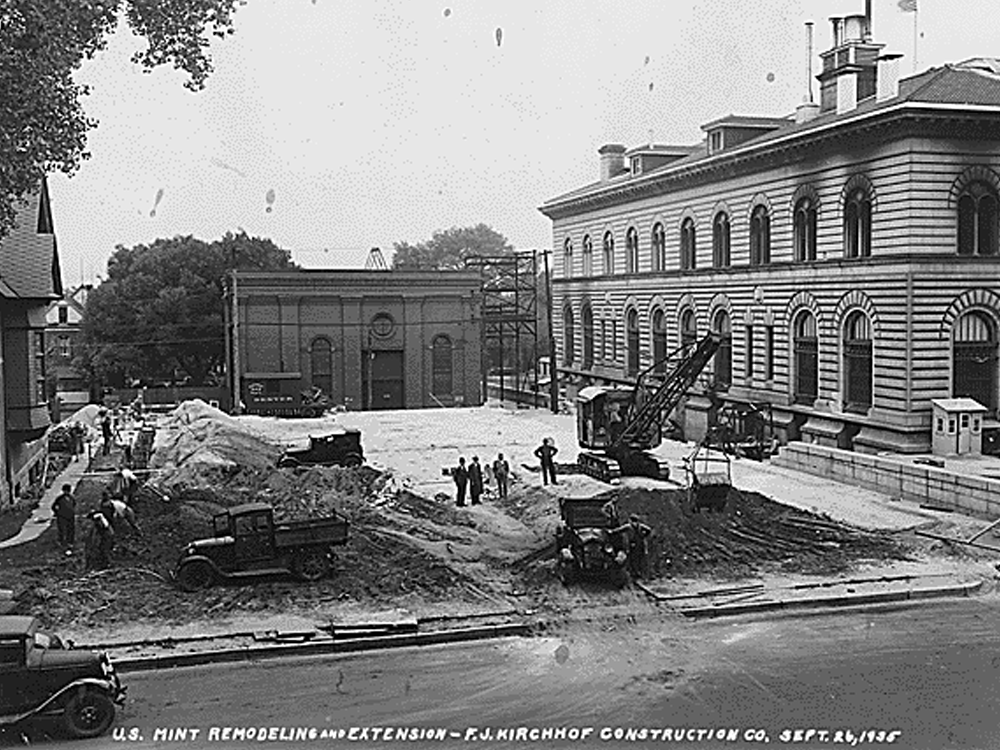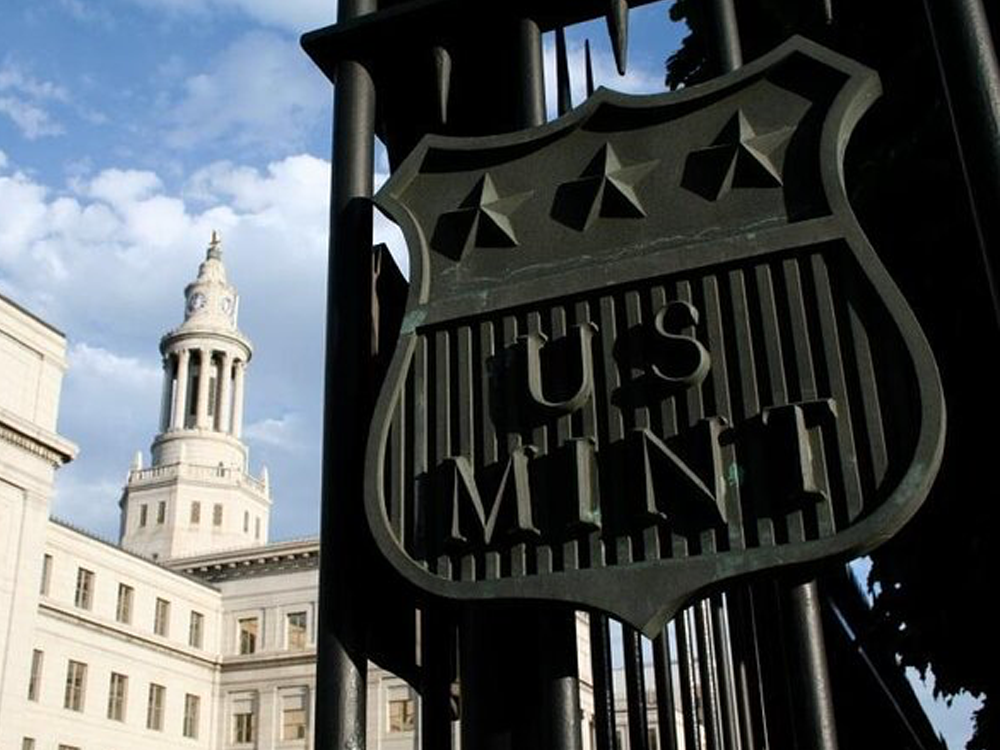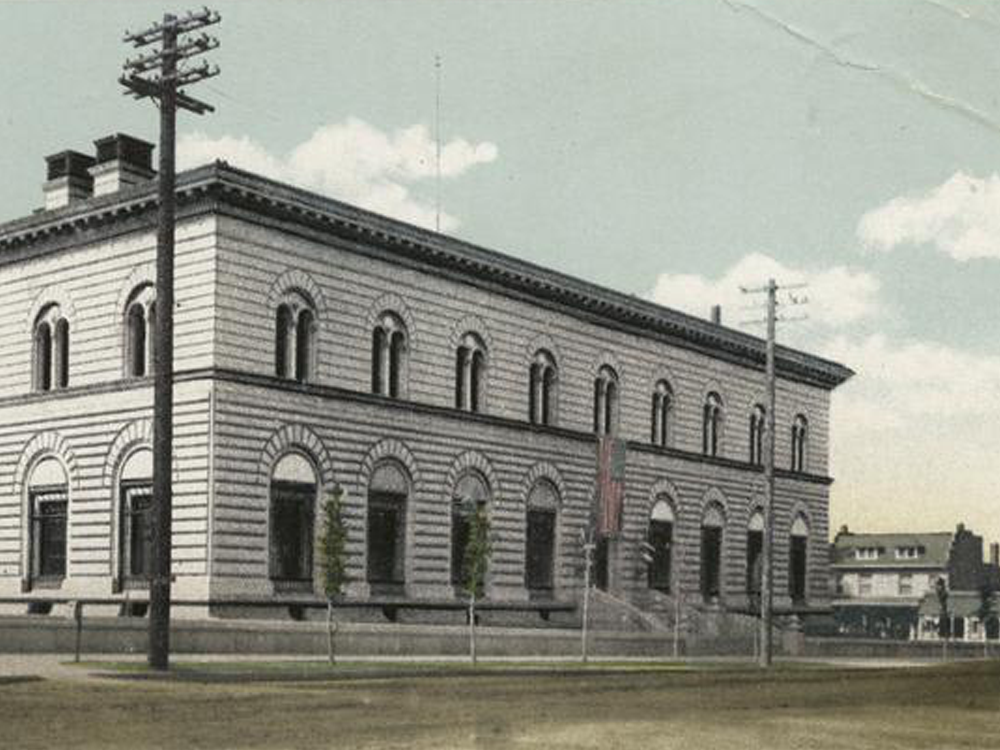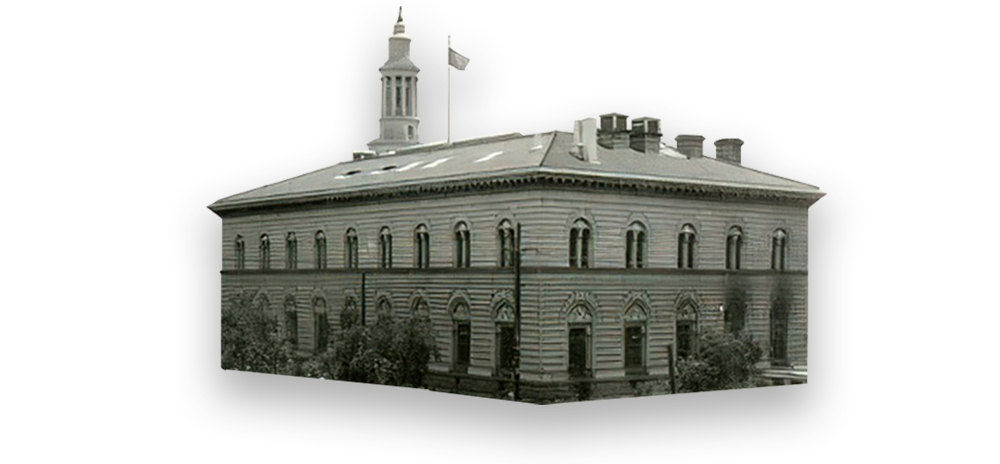
While the first coins to bear the Denver (D) mintmark did not appear until 1906, the history of the institution can actually be traced back to the early 1860s when gold was discovered in Colorado. The firm of Clark, Gruber & Co. set up a private mint in Denver, and from 1860 to 1862, approximately $594,000 worth of coins were struck in four denominations ($2.50, $5, $10 and $20). While the $20 pieces are quite valuable, the other three are relatively inexpensive (for Territorial gold coins).
In April 1863, the building, assaying and minting equipment was purchased by the U.S. Treasury and for the next 33 years, the facility was operated as an assay office. In 1896, following Congressional approval for the establishment of a branch mint in Denver, a building was purchased and construction began the following year. Although completed in 1904, coinage operations did not begin until February 1, 1906.
Output was high from the start, with dimes, quarters, halves, half eagles, eagles and double eagles struck the first year in quantities sometimes exceeding those of the more established mints at Philadelphia, San Francisco and New Orleans. Coinage of cents and quarter eagles began in 1911, with nickels commencing the following year. Over 20 million Morgan dollars were struck in 1921.
Due to its relatively late start, the Denver mint does not boast as many great rarities as San Francisco, Carson City or New Orleans, but there are several noteworthy coins that certainly deserve mention. Heading the list is probably the 1927-D double eagle, whose meager mintage of 180,000 was held at the mint, and later melted. Survival estimates range from about 15 to 18 pieces, all of which are uncirculated and any offering today is considered a major event, with prices well over $1 million now the norm. Sharing a similar fate was the 1931-D double eagle, and while not nearly as rare (perhaps 160 or so known) still fetches a six-figure price when offered.
One of the most famous Lincoln cents is also from the Denver mint, though no mintmark is seen! The 1922 “Plain” is actually a 1922-D, with the mintmark having been accidentally filed or polished off in an attempt to repair the obverse die after a clash. The 1914-D Lincoln cent is one of the toughest in that popular series, and the 1916-D dime, while not an ultra-rarity, remains the key date in the Mercury dime series. The 1932-D shares the same distinction for the Washington quarter series and collectors seeking a high-grade Walking Liberty half set will find both the 1919-D and 1921-D among their tougher acquisitions. The famous 1918/7 Buffalo nickel was also a product of the Denver mint as was the even more famous “3-Legged” issue of 1937. The 1911-D Indian quarter eagle is the only tough coin in that short-lived series.
As a rule though, the Denver mint’s output was generally high and with nearly 120 years of uninterrupted service under its belt, it has truly served the nation as its “workhorse” mint.
